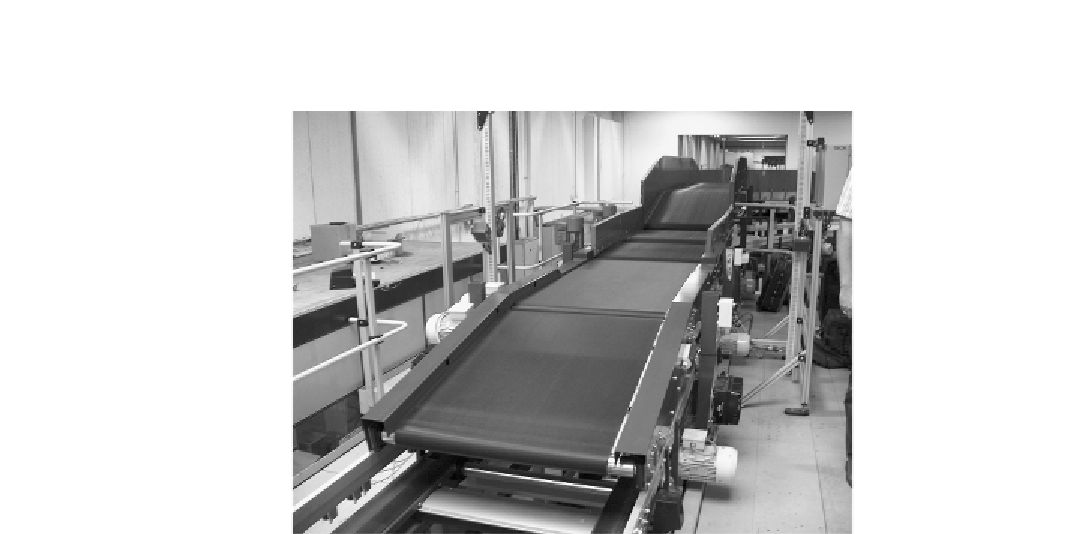Environmental Engineering Reference
In-Depth Information
negotiate its way through the system, and if the timing was urgent, the bags
would be willing to pay a higher price than nonurgent bags.
Such an approach often leads to other complications, such as communication
overhead and complex agent management (Brennan and Norrie 2003). Because
the BHS generally consists of pathways of first-in-first-out (FIFO) queuing con-
veyors with little and often no possibilities of overtaking each other, it is more
appropriate to design the agents around the flow of the BHS, which makes the
elements the potential candidates for agents. The element agents should then
coordinate their activities to optimize system performance and should therefore
be considered as collaborative agents, rather than competitive agents.
11.4
Toploader
The input facilities of the BHS are called
toploaders
,astheydropbagsinto
the totes from a conventional conveyor belt (see Figure 3.12). Before the bag is
inducted
into the tote, it passes a scanner that reads the ID tag and destination,
so the control system has exact tracking of the bag at all time.
Identity and destination of the bag are unknown until the bag passes the
scanner at the toploader. The scanning initializes routing of the tote, but the
short time leaves no option for global optimized planning of all current totes
with replanning for every new arrival.
Basically, the task of the toploader could be decomposed into several steps.
Scanning the bag, which happens automatically, has no direct impact on the
Figure 3.12
A toploader, where bags arrive on a traditional conveyor belt




Search WWH ::

Custom Search